 By Staff By Staff
March 6, 2017
BURLINGTON, ON
The Ontario Legislature will be meeting on Tuesday, which will be an Opposition Day that has Progressive Conservative leader introducing a motion that reads:
Whereas, school closures have a devastating impact on local communities; and
Whereas, children deserve to be educated in their communities and offered the best opportunity to succeed; and
Whereas, rural schools often represent the heart of small towns across Ontario;
Therefore, the Legislative Assembly calls for an immediate moratorium on rural school closures and an immediate review of the Pupil Accommodation Review Guideline.
We, the undersigned, are asking for all-party support on March 7 for an immediate province-wide moratorium on school closures and Program & Accommodation Reviews (PAR). We’ve seen first-hand the problems with the PAR process, as one is currently underway in Burlington with the initial recommendation to close two schools: Burlington Central High School in downtown, and Lester B. Pearson High School in the North.
Our story is not unique; the challenges we’ve experienced are playing out in rural and urban communities throughout the province and led to the formation of the Ontario Alliance Against School Closures.
A broken process can only deliver a broken outcome, not in the best interests of our students or our communities. Stop closures and PARs until the broken “baker’s dozen” below can be fixed:
Provincial elimination of “top-up funding” for so-called “empty pupil spaces” in schools. This policy change penalizes school boards that maintain geographically diverse schools, situated within walking distance (or in rural areas a short bus ride) from where students and their families live. Boards are pressured to eliminate these spaces by closing schools and warehousing students into larger big-box schools, further from where people live.
This must change: The education funding formula needs a complete overhaul to focus on education not counting the number of students that can fit in a classroom.
A focus on what can be counted, not what counts: Boards can call a PAR if average utilization across several schools is less than 65%. The assumption is that programming choice suffers when utilization falls below this rate – but no evidence need be provided that programming choice is a problem before calling a PAR.
This must change. Communities deserve real, not anecdotal, evidence of programming concerns.
No guarantee savings from school closures will go into programming. In a classic government Catch-22, the PAR committee cannot discuss what might happen to savings from closing schools before we close the schools, because the decision to close schools hasn’t been made.
This must change. PARs called to deal with programming challenges must be required to show how closures will deliver programming improvements.
No quality control on data. The five year facility renewal costs for Burlington’s seven schools changed by a factor of $23 million halfway through the process, due, we are told, to a change in company and software used by the province, and whether costs were put inside the five year window or later than five years. Some costs were included that had already been complete. The new data contains errors.
This must change. The process should be stopped until reliable data can be procured.
PAR relies on enrollment projections that look backward not forward: Enrollment projections are based on Statistics Canada data which look at what has happened, not what will happen. Previous projections underestimated enrollment at Dr. Frank J. Hayden High School, and at Burlington Central. Recent Statistics Canada data has Burlington’s overall population well above projections; household data isn’t projected to be released till May – after the school board director has already released his preferred recommendation for a vote by trustees.
This must change. The process should be stopped until reliable data can be procured.
No requirement to include elementary students housed in high schools as part of any high school PAR. No solution has been or must be provided for the 260 grade 7/8s who are currently in Burlington Central High School if the school closes.
This must change. PARs called for high schools must require inclusion of all elementary students housed in high schools.
Impact on community and economic factors eliminated by this government as part of PAR considerations. Many of the schools targeted for closure in Ontario are located in areas where the most vulnerable students live, often in downtowns where the greatest number of low-income families, single parent families and immigrant families are located. Downtown schools like Burlington Central, are located in business districts that provide access to co-op placements, volunteer hours, and work placements at 430 businesses and several civic centres – which will all be lost if the school is closed.
This must change. Community considerations must be added back to the PAR process.
PAR decisions violate a range of provincial policies. PARs increasingly lean toward closing historic downtown walkable schools and shipping students to larger, newer schools outside their community (for example Barrie Central Collegiate, Kingston Collegiate and Vocational Institute, and Central which will turn 100 years old in 2022). This directly violates provincial policies to encourage walkable, complete communities, revitalize downtowns, protect our most vulnerable residents, give them equality of opportunity, and preserve Ontario’s heritage resources.
This must change. The government must ensure PARs uphold provincial policies.
Increased bussing in Burlington: 92% of students attending Burlington Central High School live in the walking catchment. If the school closes, 100% of students will be bussed outside the community. Walking to school is both physically and mentally the healthiest choice – one actively promoted by this government.
This must change. PARs in urban areas should be required to promote walkability.
A “recommended option” is required to start a PAR: The schools named in the recommendation are immediately on the defensive to save their schools, while other schools ignore the process – until they pop up later in the PAR as a potential option and feel ambushed.
This must change. PARs should have no recommendation or an open-ended recommendation that alerts all schools they could be impacted, to ensure full participation from the beginning.
Lack of clear communication about the PAR. PAR communication by the Board in Burlington has used jargon and mentioned “options” and “process,” without naming schools that could be closed.
This must change. The province should require boards to use plain language, name schools slated for potential closure and clearly communicate the gravity of proposed changes.
Involvement of MPPS, elected trustees, and municipal councillors is discouraged so as not to be seen as somehow interfering. This simply drives advocacy underground and behind the scenes, and deprives residents of the democratic right to have their elected representatives represent them – throughout the process, to shape the best outcome, not simply to react when a report and recommendation is already written.
This must change. Trustees, MPPs and municipal Councillors should be welcomed to full participation in the process.
Province and board play hot potato: When residents complain to the board about school closures, board staff throw the hot potato to the province: they are just following provincial policies and funding formulas. When residents complain to the Ministry of Education or their local MPPs, they throw the hot potato back to the board: the trustees have the final decision. It’s a perfect dodge to accountability by any level of government.
This must change. This government must fix the broken policies creating the crisis in education in rural and urban communities across Ontario, not shift responsibility to boards.
In conclusion
Our community’s faith in this process has been sorely tested, like so many other communities across Ontario who have gone through PARs. Residents feel the process is skewed and set up to promote the Board’s preferred option from the beginning. Public engagement has been stage-managed and appears simply as checking off the box of a Ministry requirement that the boards must go through in order to close schools. Incomplete, outdated or incorrect data is permitted. None of the information gleaned from the process needs to be considered by the board, because PARs do not make a recommendation. It’s time to stop the process and begin again.
Residents deserve and demand better than this broken process which is bound to deliver a broken outcome that hurts students, families, rural and urban communities alike. We are asking all parties to work together to support the motion on March 7 for:
An immediate moratorium on school closures
An immediate moratorium on existing PARs underway
Review and reform of broken PAR process
Review and reform of the broken education funding formula
Sincerely,
Marianne Meed Ward & Ian Farwell,
PARC members, Burlington Central High School.
centralparc@hdsb.ca
Dania Thurman & Lynn Crosby,
CentralStrong Community Group.
www.centralstrong.ca
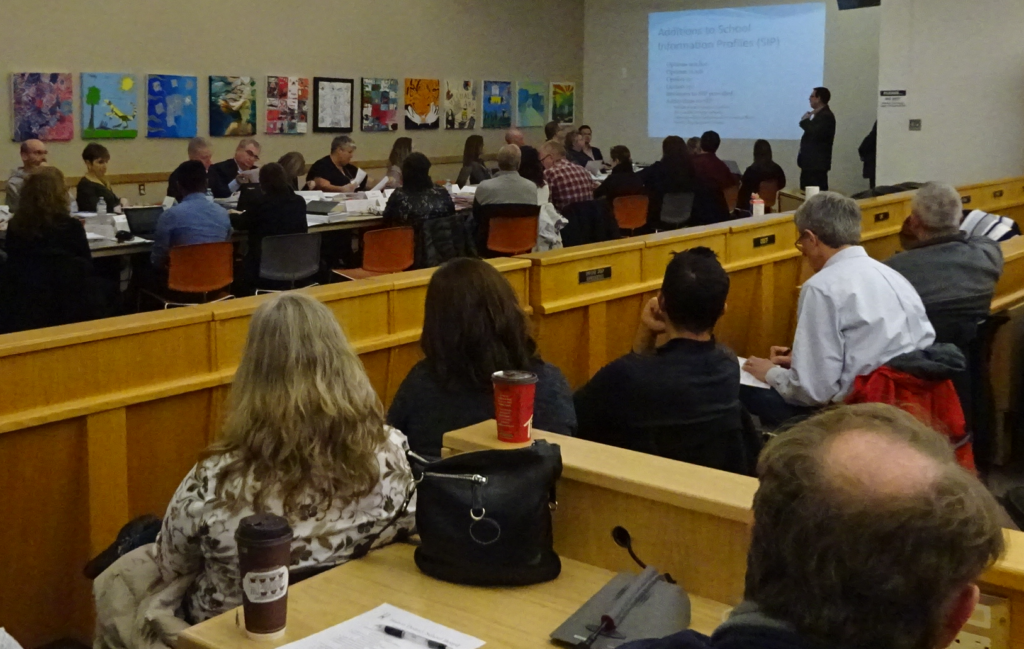 Members of the Program Accommodation Review Committee in session with the public observing. 
 By Pepper Parr By Pepper Parr
March 6th, 2017
BURLINGTON, ON
It was a fully engaged crowd at the first public meeting held at Hayden high school where parents got to see just what the high school closing options were.
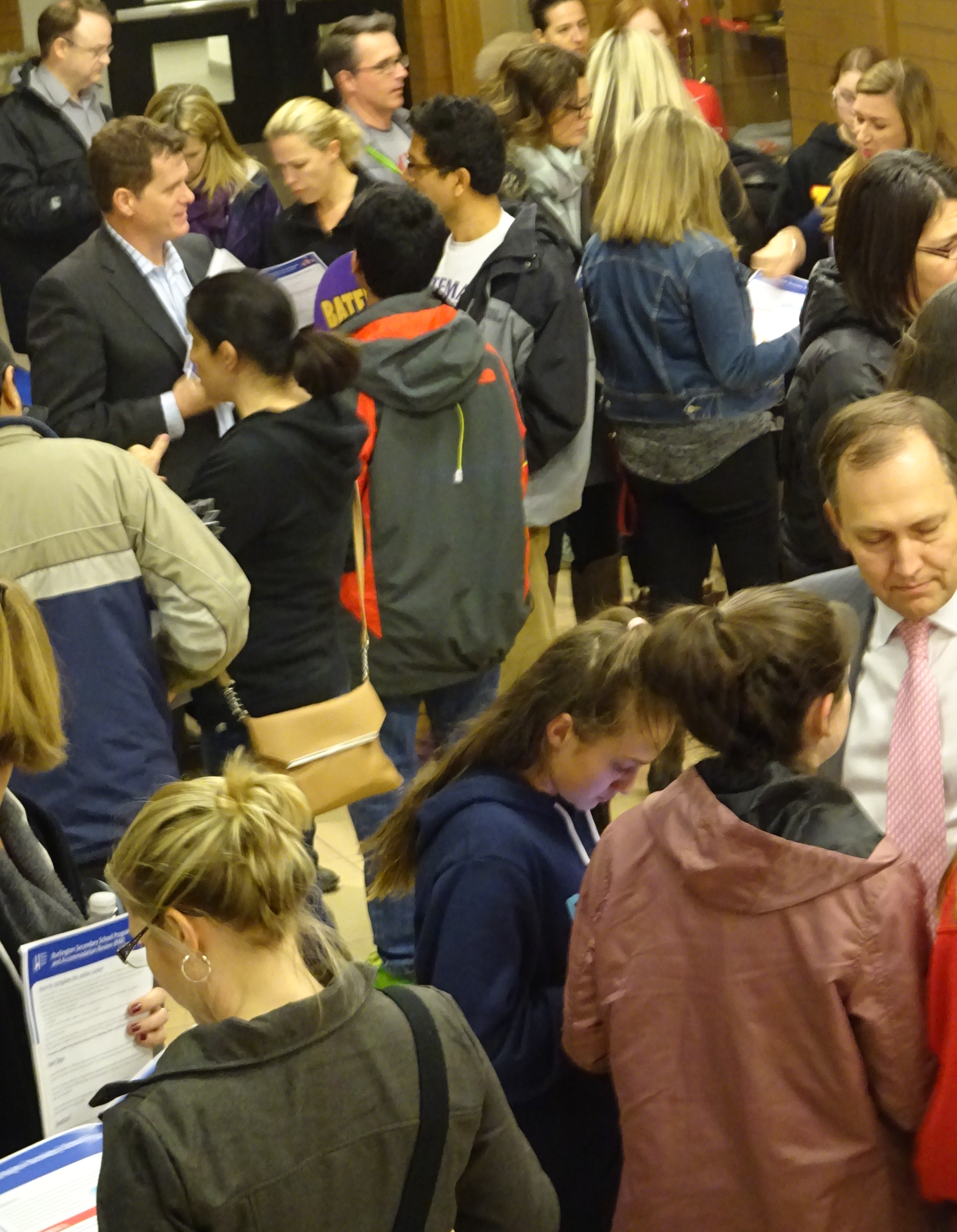 The parents who attended the first public meeting at Hayden high school last week were fully engaged in trying to figure out and understand what the options for possible school closing were. They don’t like the way the information is being made available and they want to be able to ask questions.
Last October the Board of education trustees accepted a report from the Director of Education and agreed that a Program Accommod-ation Review should take place.
That resulted in a committee (PARC) looking at the staff recommendation that Central and Pearson high schools be closed and accepting other possible options.
The PARC looked at 30 options and whittled the list down to the six that are now being taken to public meetings.
The second public meeting takes place at the New Street Education centre – it is going to be noisy.
 The Board of Education staff put up large posters setting out the boundaries that would apply to the various school closing options. Parents found that the staff members on hand to answer questions didn’t have much in the way of answers. Comments from Gazette readers tell us that “many, many people (as in hundreds) are extremely dissatisfied with the way the so-called public information sessions are being held, specifically the display stations that were set up.”
“Parents want their questions answered, many have complained that staff at the last meeting were not able to do this properly. Every single member of PARC has asked that the format be changed to include a large group Q and A and they have refused.
“Their pathetic excuse is that the last meeting was with display stations and it wouldn’t be fair to the people who went to that one to change this one.
“Again, like so many answers coming from the board, this makes no sense.”
“Angry parents from Central, Nelson and Bateman are planning different tactics to have their voices heard at tomorrow’s meeting. Not sure how it’s going to play out but I think there might be fireworks.”
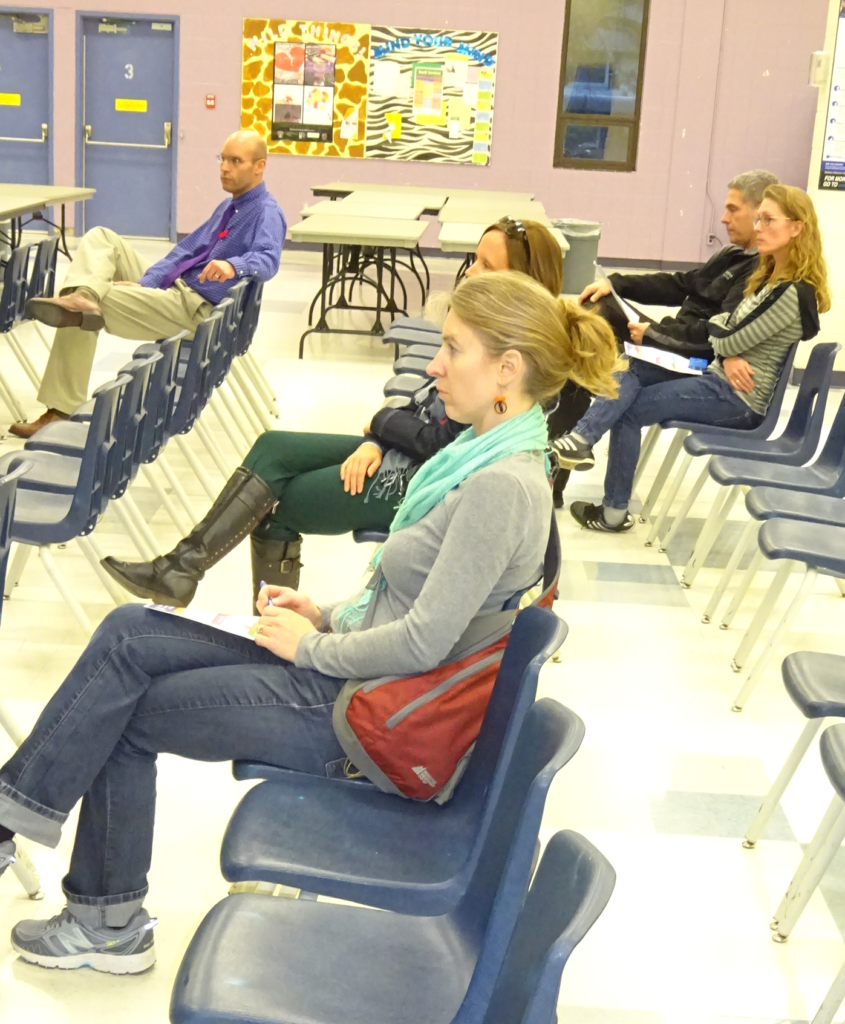 This was the extent of public participation at Bateman high school when the Board of Education gave an overview of the school closing process. Everyone thought that Central and Pearson high schools were on the list. Truth was – every high school was at risk. Getting to the point where the Board of Education now has public interest has taken some time – earlier meetings at all seven high schools were very quiet and very poorly attended events.
That isn’t the case today – and parents want their Board of Education to respond to their demands.
The elected trustees are close to mute on this – they have the power to direct Board of Education staff to make changes in the way the public is informed – it is almost as if the trustees are in the pocket of the Director of Education.
The high school parents are not happy campers.
Central high school parents will be walking from the Roseland Plaza to the New Street education Centre. Nelson, Bateman and Pearson high schools are also reported to have plans.

 By Staff By Staff
March 6th, 2017
BURLINGTON, ON
Ontario is boosting support for the City of Burlington providing them with reliable, long-term funding to improve and expand local transit and offer more travel options for commuters and families.
The funds are provided by the province – it is up to the city to actually spend the money on transit – in the past city council has opted to spend the grant from the province on road repairs.
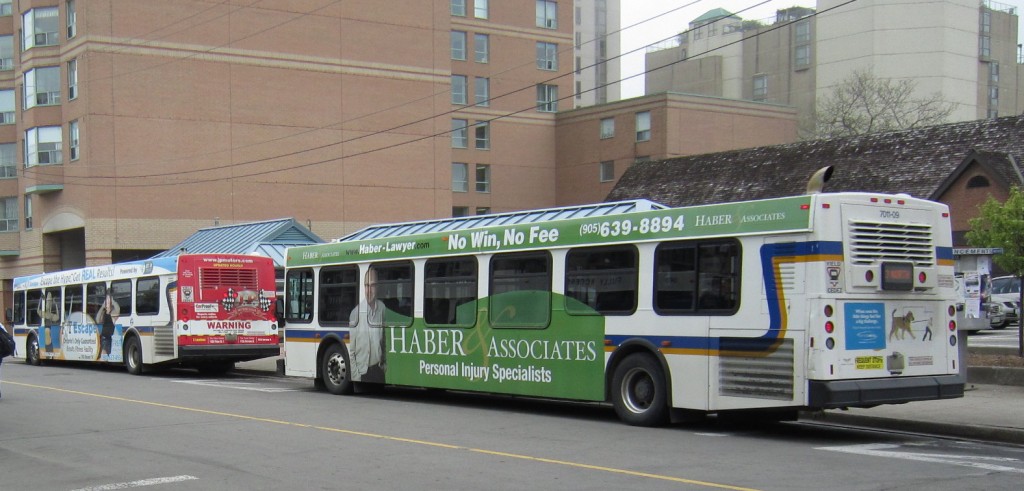 John Street terminal – will be designated as a mobility hub – what kind of a difference that is going to make is not all that clear. Starting in 2019, Ontario will increase funding for Burlington and other municipal transit systems across the province through an enhancement to the existing gas tax program, doubling the municipal share from two cents per litre to four cents by 2021. There will be no increase in the tax that people in Ontario pay on gasoline as a result of the enhancement to the program.
 Gas price are all over the map – but seldom below $1 a litre. Burlington which has received an average of about $2 million per year in gas tax funding, could see its funding increased to an estimated $2.5 million in 2019-20, $3 million in 2020-21 and to $4.1 million in 2021-22.
The City of Burlington is able to use gas tax funding to make major infrastructure upgrades, buy additional transit vehicles, add more routes, extend hours of service, implement fare strategies and improve accessibility.
Eleanor McMahon, MPP for Burlington sees this as “… great news for the City of Burlington. Increased gas tax funding will help tailor services to suit our community needs. Providing more options for commuters and families in Burlington will keep our region moving and will make transit a more convenient and attractive form of transportation.”
 A selfie of the Mayor on the day he rode the bus to work. The office of the Mayor provided the picture. The Mayor “… welcomes increased Provincial investments into our transit system and the continuation of sustainable, long-term funding. The increase will coincide with the work we are currently undertaking to develop a new transit strategy, which will continue to make public transit another viable travel option for our residents.”
Ontario made gas tax program funding permanent in 2013 to provide a stable source for municipal transit investments. One bus takes up to 40 vehicles off the road, and keeps 25 tonnes of greenhouse gas emissions out of the atmosphere each year.
The problem Burlington faces is that its citizens don’t want to get out of their cars.

 By Staff By Staff
March 6th, 2017
BURLINGTON, ON
It’s Fraud Prevention Month (#FPM2017) and the Halton Regional Police Service (HRPS) releases the first of four graphics illustrating common scams used on innocent, sometimes gullible people.
The program is being run nationally with the RCMP who report that 748 victims lost more than $17-million in 2016 to con artists purporting to be in love. The figures are believed to be much higher as many victims are too ashamed to report the fraud.
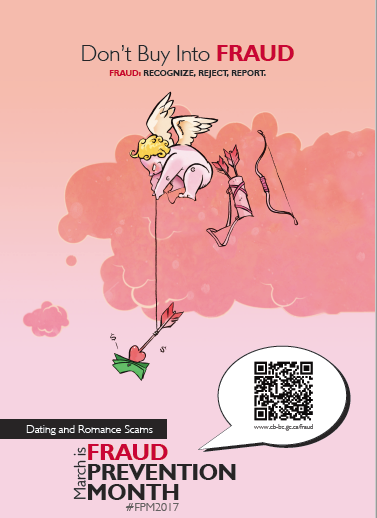 Poster being used to warn people about romance scams. Dating and romance scams often begin when an individual creates a fake profile and posts it on popular online dating websites and/or social media. From there, he/she solicits interest in an attempt to gain a victim(s) affection and trust. Soon thereafter, a request(s) for funds is made. Believing themselves to be in a committed relationship, the victim often willingly complies. Money sent is not re-paid and the con artist disappears when they believe they have received all they can from someone.
“Dating and romance scams are popular because fraudsters prey upon the desire many people have to be love and accepted,” said Staff Sergeant Chris Lawson of the Regional Fraud Unit. “Sadly, it is often those who can least afford to lose money – older men and women, people who live alone or those with limited funds – who are victimized.”
The following dating and romance scam safety tips have been provided courtesy of the RCMP and the Competition Bureau of Canada:
• Only use legitimate and reputable dating sites.
• Check the addresses of online dating websites carefully. Scammers often set up fake websites with very similar URLs to legitimate ones.
• Be suspicious when someone you haven’t met in person professes their love. Ask yourself: Would someone I have never met really declare their affection after only a few letters or emails? Like many scams, if it sounds too good to be true, it likely is.
• Be skeptical of out-of-the-ordinary stories. Common narratives include someone claiming to live nearby but who is working overseas or someone with a sick family member in need of funds.
• In some cases, scammers will try to lure potential victims with flowers or other small gifts before asking for banking details or money.
• Never send money or give credit card or online account details to anyone you do not know and trust.
 Not always what it seems. Anyone with information pertaining to a fraud or any other crime is asked to contact the Regional Fraud Bureau Intake Office at 905-465-8741 or Fraud@haltonpolice.ca. Tips can also be submitted anonymously to Crime Stoppers “See something, Hear something, Say something” at 1-800-222-8477 (TIPS), through the web at www.haltoncrimestoppers.ca, or by texting “Tip201” with your message to 274637 (crimes).

 By Staff By Staff
March 6, 2017
BURLINGTON, ON
The heavy weights are beginning to have their say about the closing of high schools in Burlington,
World-renowned artist and Robert Bateman High School namesake is speaking out against the possible closure of the school.
 Robert Bateman “The times that I’ve been there I’ve been just amazed at the things they’re doing that no school has ever done before but that were being done at Bateman,” said Robert Bateman, who taught at the south east Burlington school from 1970 when it opened until 1976.
Mr. Bateman now lives in Salt Spring Island, B.C. and still visits the school once a year. When he learned that Bateman HS was one of six schools being considered for closure by the Halton District School Board as part of the Program and Accommodation Review (PAR), he expressed concern about the impact it would have on students and the community.
“I think it’s much better for the kids and much better for their education to have schools in their neighbourhoods so you have the same geography and you have the same feeling for the history of it,” said Mr. Bateman.
“It’s extremely important for the emotional and human component of children.”
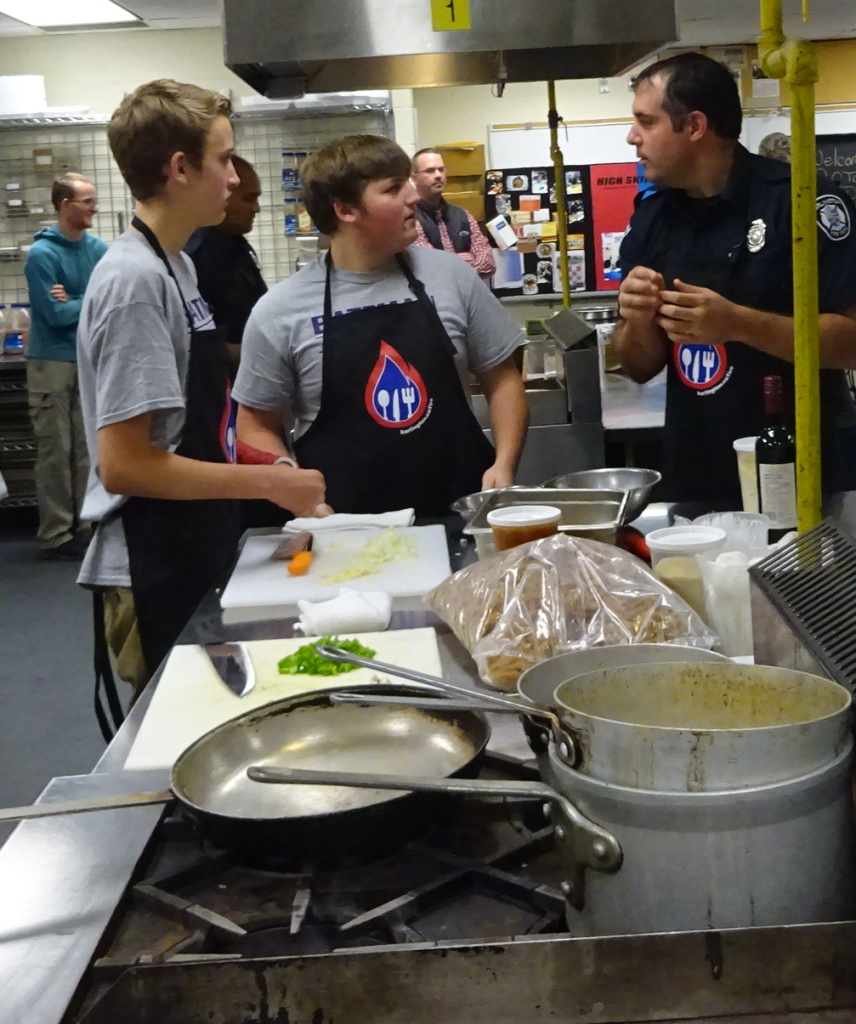 Bateman high school students during a cook-off with Burlington fire fighters. Bateman High School has had more than $2-million in upgrades over the last six years, and with existing accommodations in place for the Community Pathways Program (CPP) it is the most up-to-date for AODA requirements. It fills a unique void in the city’s education system because of its wide range of diverse programming including: International Baccalaureate (IB) program; the self-contained CPP for students with special needs; LEAP Program to help transition students to grade nine; specialty facilities that include a highly customized kitchen for a culinary program and a specialized auto body paint booth for one of the many Ontario Young Apprentice Programs (OYAP).
There is also an Autism Social Skills and Drama Group, Robotics Specialized Course and multiple design/tech rooms. Having all program pathways under one roof is critical to student success as it allows movement between the pathways. Scattering those programs would effectively limit the opportunities available to our most vulnerable student population.
“The school has all kinds of departments that are getting kids much more prepared for life.”
“I think it’s a terrible idea (to close it) and it doesn’t make common sense” says Bateman.
Closing Robert Bateman would also result in the closure of the on-site YMCA Lord Elgin Day Care and could impact Centennial Pool, which had costly renovations last year.
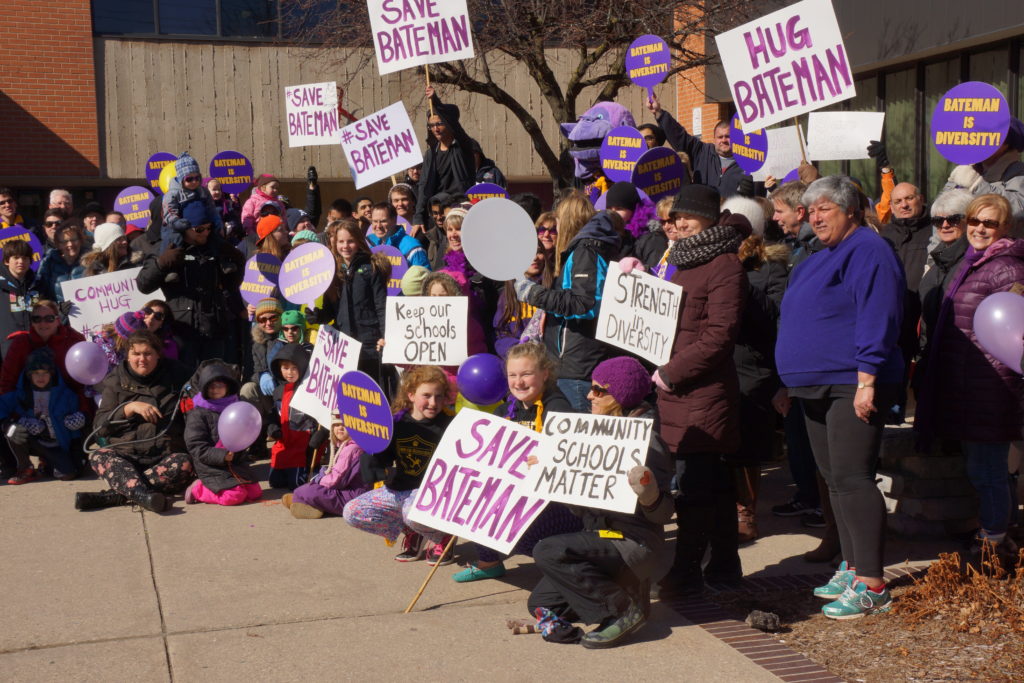

 By Pepper Parr By Pepper Parr
March 6th, 2017
BURLINGTON, ON
It is as official as it can get – Trevor Copp will be doing Shakespeare at the RBG ROCK next August. He is looking for a fund-raising intern for his summer “Shakespeare at the Rock” production at the Royal Botanical Gardens (RBG) at the Burlington-Hamilton border.
 Trevor Copp listening to RBG Director Mark Runciman at the opening of A Midsummer Night’s Dream at the Rock last year. Last summer Copp put on one of the more successful events in the city – 2000 attended last year’s event at the RBG’s new Rock Gardens over eight performances, which has now been extended to a three week run for August 2018.
The fund raising intern will be mentored in the areas of corporate sponsorship and individual giving by one of Canada’s most senior fundraisers whose experience includes leading campaigns for the Grand Theatre in London and the Development Director for the National Ballet of Canada.
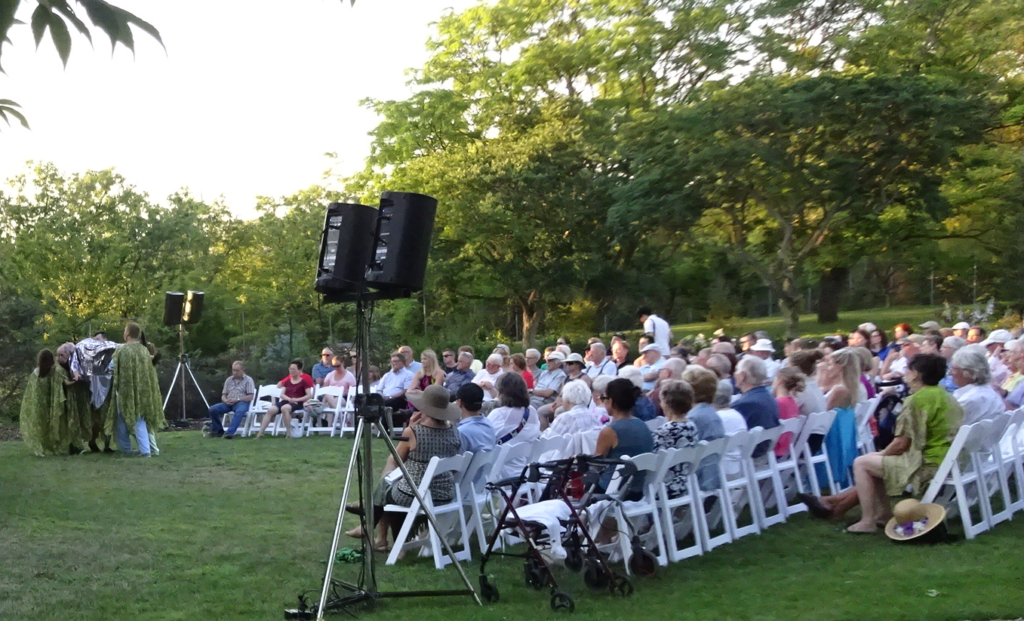 Eight performances of Shakespeare’s Midsummer Night’s Dream were interrupted by rain one one occasion, a serious traffic accident on the QEW that kept the cast away from the outdoor stage – but it was still the outstanding arts event of last year’s season. And its on again for a three week run next August. Ideal candidates are/intend to obtain full certification in corporate fundraising. This is a paid internship to occur over the course of 2-3 months from June – August with some responsibilities falling outside of these dates as well. If interested, please contact Tottering Biped Theatre’s Artistic Director Trevor Copp at
artisticdirector@totteringbiped.ca
The position involves professional level writing skills, the covering letter will show what your writing chops are like – that letter should have a couple of paragraphs on why you are ideal for the job – include references.

 By Staff By Staff
March 6TH, 2017
BURLINGTON, ON
It was one of the crisp, clear, cold Canadian winter days with the sun shining brightly.
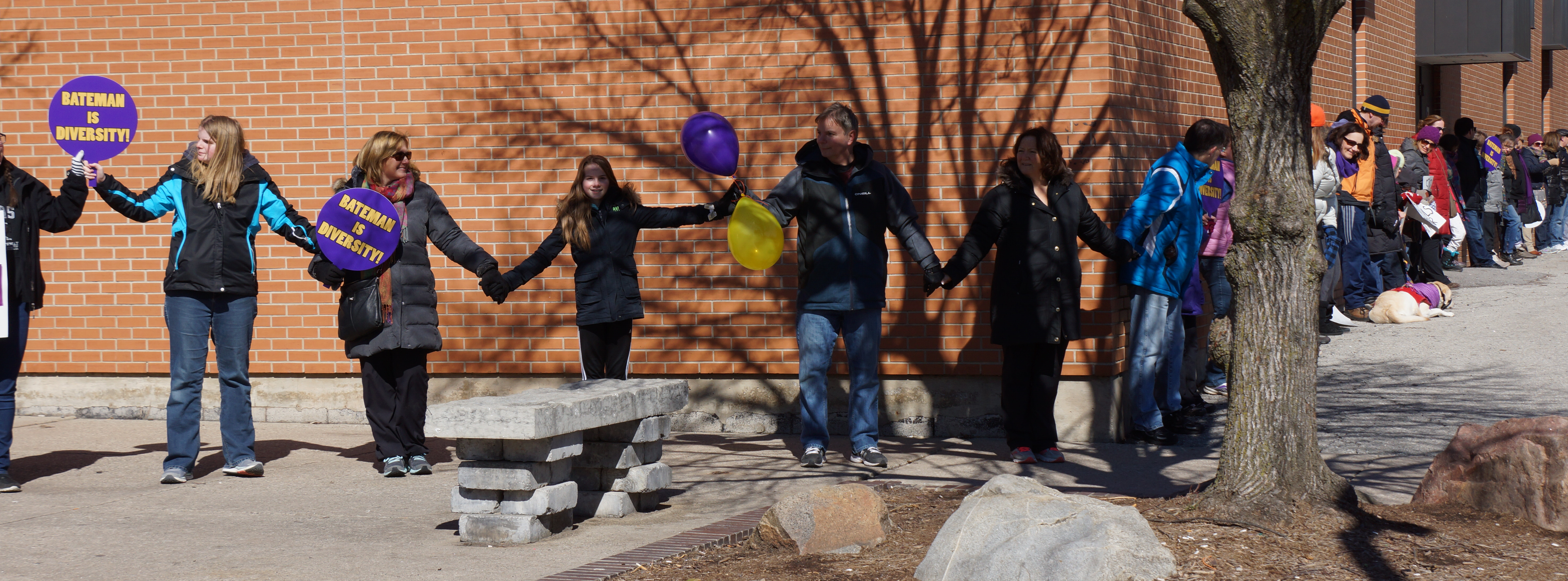 Robert Bateman high school gets a hug from parents and students Saturday afternoon. More than 150 people gather at the Robert Bateman high school in the east end of Burlington to give their school, which is being threatened by a possible closure, what the community felt was a much needed hug.
In October, the staff at the Board of Education gave the elected school board trustees a report which said that the required criteria for a review on the high school accommodation has been met.
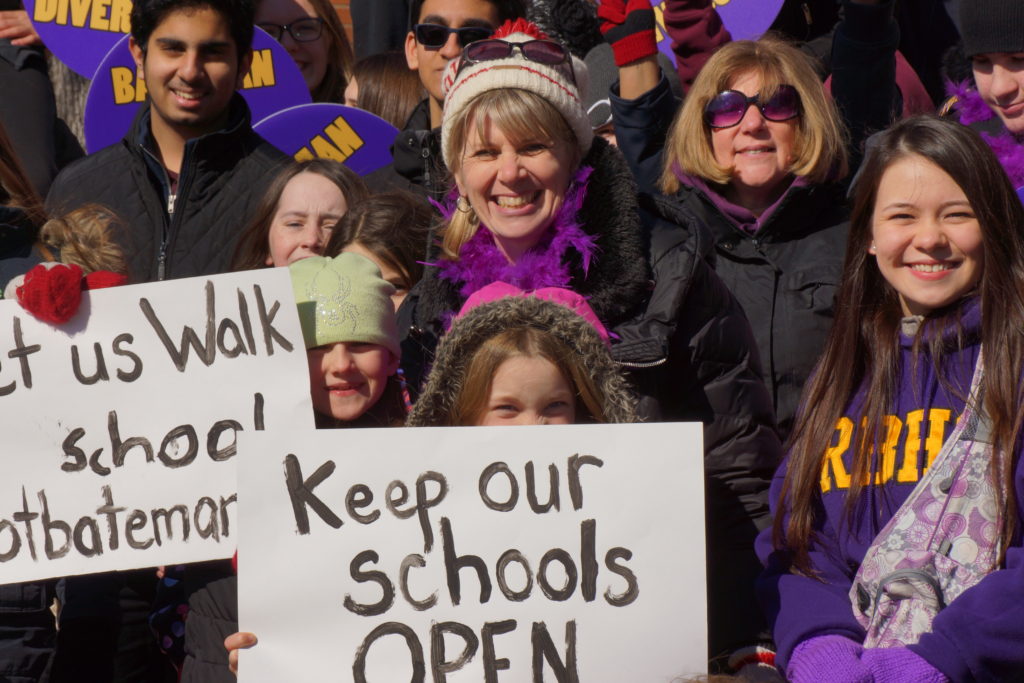 Smiles on a Saturday afternoon – serious issue before the school board trustees. The trustees accepted the report and voted to create what is known as a Program Accommodation Review (PAR). A committee of two parents from each high school was created to review the options that existed and to put forward options. There were 30 options on the table at one point – that got whittled down to 14 and then down to six that are on the table at this point.
The closing options are:
Option 7b – No school closures
Dr. Frank J Hayden SS Boundary change
- No changes to schools south of the
- Lester B Pearson HS catchment expands to include Kilbride PS catchment area, John William Boich PS catchment area south of Upper Middle Road, and Alexander’s PS catchment
- Frank J Hayden HS catchment reduced.
Option 23d ‐ Robert Bateman HS, Lester B Pearson HS closes, Dr. Frank J Hayden SS program change
- No change to Aldershot HS boundary
- Burlington Central HS catchment expands to include Tecumseh PS catchment
- IB program added to Burlington Central HS from Robert Bateman
- Nelson HS boundary expands east. SC‐SPED & Essential programming redirected to Nelson HS from Robert Bateman
- MM Robinson HS ENG catchment expands to include Lester B Pearson HS
- Frank J Hayden SS FI program redirected to M.M. Robinson HS. No change to the English catchment.
Option 19b – Burlington Central HS, Lester B Pearson closes HS, Dr Frank J Hayden SS & Robert Bateman HS program change
- Aldershot HS catchment expands east to Brant St, ESL program relocated to Aldershot HS from Burlington Central HS. 10 rooms available from the Aldershot elementary facility to accommodate additional
- Nelson HS expands west to Brant
- Robert Bateman HS catchment include John William Boich PS catchment south of Upper Middle Rd, and the entire Frontenac PS catchment
- FI program added to Robert Bateman HS with same boundaries as the English program
- MM Robinson HS English boundary expands to include Lester B Pearson HS. FI boundary include Dr. Frank J Hayden SS with the exception of John William Boich PS catchment south of Upper Middle
- Frank J Hayden becomes English only school, with a reduced English catchment area
Option 4b –Robert Bateman HS closes
- No change to Aldershot HS
- Burlington Central HS expands to include the entire Tecumseh PS
- Nelson HS expands east to include Robert Bateman HS. Nelson HS receives the SC‐SPED and Essential programming from Robert Bateman
- MM Robinson HS catchment expands to include Kilbride PS catchment
- Lester B Pearson HS catchment expands to include Florence Meares PS catchment. IB program and Gifted Secondary Placement added to Lester B. Pearson HS from Robert Bateman HS and Nelson HS
- Frank J Hayden SS English catchment area is reduced.
Option 28d – Burlington Central HS and Lester B Pearson HS closes, Program change for Dr Frank J Hayden SS
- Aldershot HS catchment area expands easterly to railway tracks, ESL program added to Aldershot from Burlington Central
- Nelson HS catchment area expands west to the railway
- Robert Bateman HS catchment area expands to include John William Boich PS catchment area and Frontenac PS catchment
- MM Robinson HS catchment area expands to include Lester B Pearson HS catchment area.
- FI is removed from Dr. Frank J Hayden SS and redirected to MM Robinson HS
- CH Norton PS area that is currently directed to Lester B Pearson HS, to be redirected to Dr Frank J Hayden
Option 3b – Nelson HS closes, Dr Frank J Hayden SS and Burlington Central HS have a program change
- Aldershot FI expands to include Burlington Central HS FI catchment
- Burlington Central HS English catchment area expands to Walkers Line
- Robert Bateman HS expands west to Walkers
- FI program added to Robert Bateman HS
- Lester B Pearson HS catchment area expands to include John William Boich PS catchment area and Kilbride PS catchment area. The Secondary Gifted placement added to Lester B Pearson HS from Nelson
- Frank J Hayden SS FI program redirected to M.M. Robinson HS.
- Frank J Hayden HS catchment reduced.
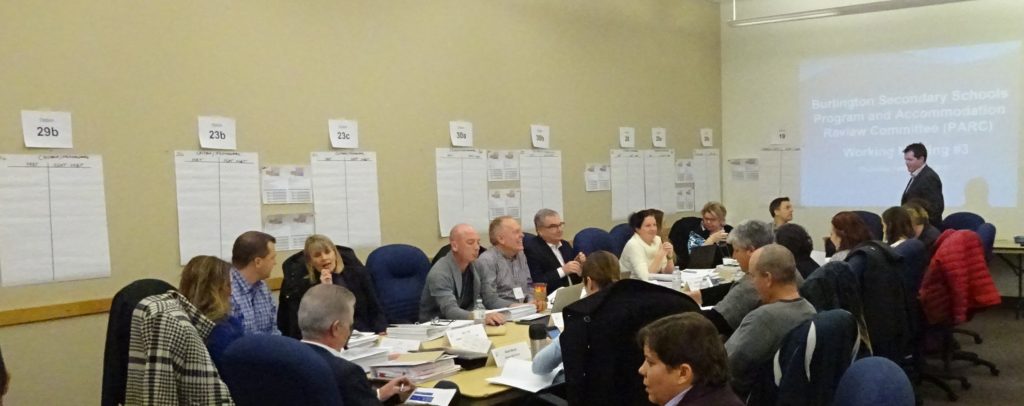 Members of the PARC deliberating on the various options that were before them. The original option came from the Director of Education – to close Central and Pearson high schools. Other options were added. Anyone can submit an option. The PARC that came up with these options has met on four occasions and will meet at least once more – and possible twice.
They will produce a report to the Director who will in turn give his recommendation to the school board trustees.
Burlington has four trustees on the 11 member school board. All 11 trustees have a vote.
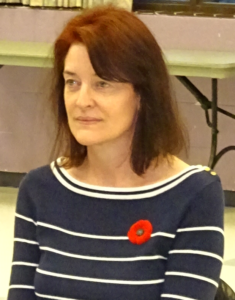 Amy Collard – Ward 5 school board trustee. Collard has been acclaimed in every election. The elected school board trustee for ward 5 is Amy Collard. She was acclaimed for every election she ran in and at one point served as the chair of the school board trustees.
The Board of Education has created an email list that can be used to communicate with the PARC members who are all volunteers
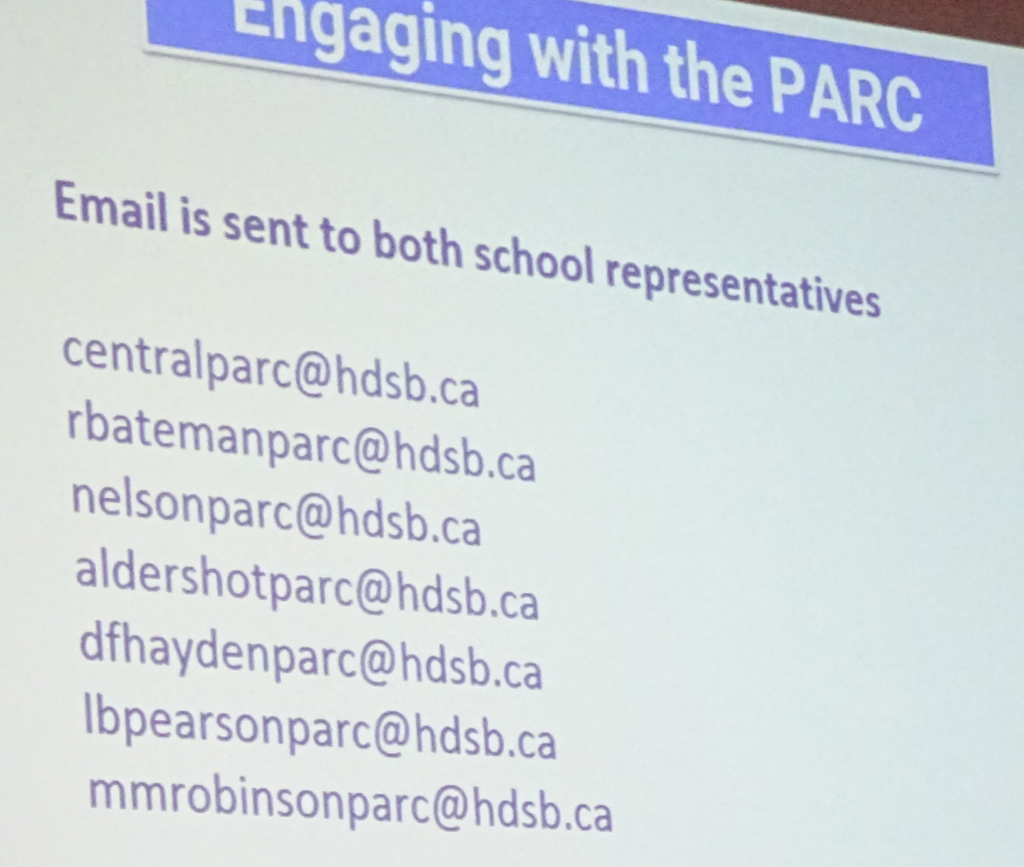 Anyone can send an email to the PARC representatives. A single email address has been created for the two representatives for each high school. Lisa Bull, one of the two parents representing Bateman on the PARC said she was “So proud of the incredibly positive approach our community has taken in their support of Robert Bateman High School. Everyone today was highlighting how much they had learned about the great diversity of programs and students at Bateman and how much they really wanted to have this saved – for current, past and future students.
Bateman, as well as three other high schools in the city, are at risk of being closed – there are 1800 + empty high school classroom seats in Burlington and there isn’t a strong enough flow of students at the elementary level at this point to fill those seats in the near future.
The process of deciding whether or not to close a high school is complex. The Board of Education created PAR that will give prepare a report for the Director of Education who will in turn prepare a report for the elected school board trustees who will, on May 17th, decide which, if any, high schools in the city will be closed.
If there is a decision to close a school that closure will take place effective September 2018. The municipal election takes place in October of 2018
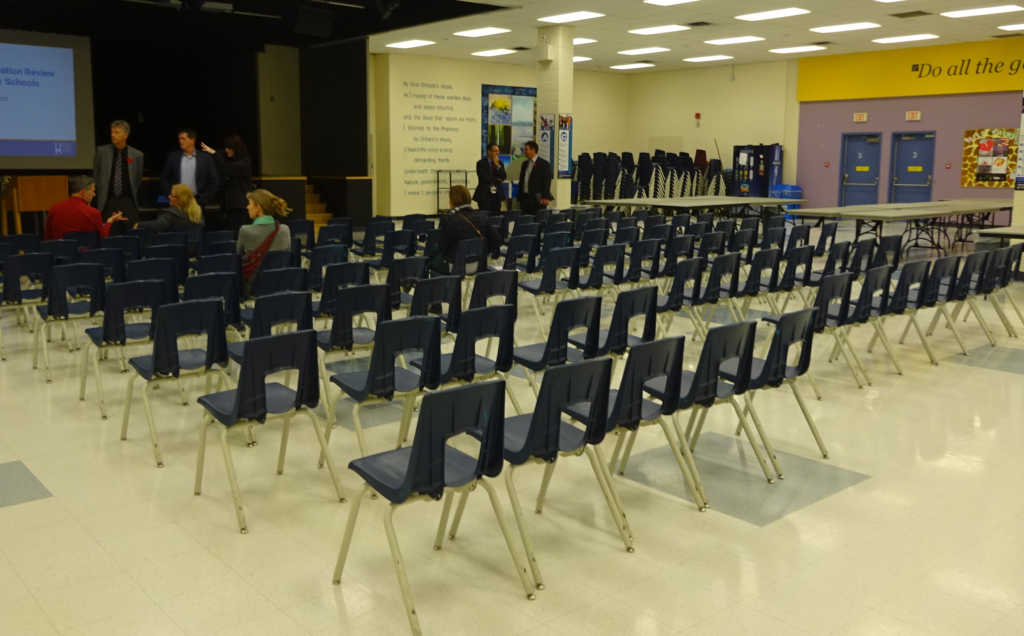 There were less than five parents at the first meeting during which Board of Education staff explained the PARC process at each high school. Few at Bateman believed their school was a risk. Parents didn’t seem to be fully aware that their school could be closed. That is certainly no longer the case.
The next event regarding the school closures takes place Tuesday evening at the New Street Educational Centre.
Central high school is planning a march from the Roseland Plaza to the Educational Centre. No word yet on what the other high schools plan to do.
The schedule for the steps to be taken between now and the final decision date are set out below.
Public Meeting #2 (South Burlington schools)
March 7, 2017 at 7:00 pm
New date New Street Education Centre
3250 New Street
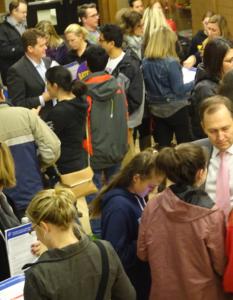 Parents at the first public meeting where all six of the high school closing options were on display were very engaged. PARC Working Meeting #5
March 23, 2017 at 7:00 pm J.W. Singleton Education Centre
2050 Guelph Line
Director’s Report (with compiled feedback) to Committee of the Whole March 29, 2017 at 7:00 pm J.W. Singleton Education Centre
2050 Guelph Line
Public Delegation Night
April 18, 2017 at 6:00 pm J.W. Singleton Education Centre
2050 Guelph Line
Final Report to Board of Trustees for decision May 17, 2017 at 7:00 pm J.W. Singleton Education Centre
2050 Guelph Line.
 Parents looking at the boundary maps and the details for each of th six high school closing options being discussed by the PARC. 
 By Pepper Parr By Pepper Parr
March 6th, 2017
BURLINGTON, ON
When the Lieutenant Governor of the province , the Honourable Elizabeth Dowdeswell, visited the Art Gallery of Burlington recently, to participate in a round table discussion with a group of 15 seniors on how Burlington meets the challenge of affordable housing she also brought with her an idea that she passed along.
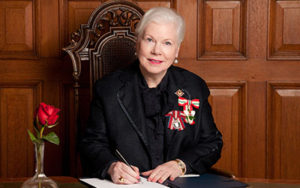 Lieutenant Governor of the province , the Honourable Elizabeth Dowdeswell. Dowdeswell shared her idea of a project she has initiated called 150 Stories. In her words: “It is my hope” said Dowdeswell, “ that by actively listening to our stories we can become more aware of and better understand each other and, in turn, create the communities and country of which we can be proud.”
The idea took hold and the volunteers as the AGB are now actively looking for the 150 stories from the people who have made the AGB what it is.
The AGB is a community made up of many individual teams and people. Their strength lies in their ability to connect with others within our own Gallery community so that we can in turn can reach out and continue to grow.
They have decided to follow her Excellency’s inspirational idea and create their own 150 stories – specific to the AGB and are people to consider contributing to the AGB book of 150 stories.
In 150 words, share what it means to be a part of the AGB.
The stories will be collected from now until the AGB Volunteer Appreciation event on April 25th where the stories on display.
Touch base via email with Becky@agb.life. They are going to collect stories until they have reached 150!
Consider submitting images (yourself, or your art) along with your 150 words.

 By Pepper Parr By Pepper Parr
March 4th, 2017
BURLINGTON, ON
Lynn Crosby, one of the more passionate Central high school supporters advises us that next week there is an all-party debate scheduled in the provincial Legislature with a vote to follow.
The debate is on a motion to stop all rural school closures and launch an immediate review of all PAR processes province-wide.
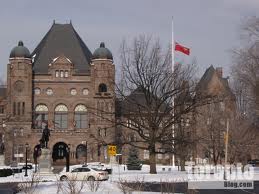 Is the solution to the closing of high schools in Burlington to be found in the provincial Legislature? This would stop all PARs currently underway. Crosby reports that the Central Strong group is going to try and see if the motion can be amended to include a moratorium on all school closures, not just rural.
Either way, says Crosby, this is huge.
Central Strong now want to know what position Burlington’s MPP McMahon will take on this vote.
Crosby says that “she votes against this she can kiss her seat in Burlington goodbye”.
 Lynn Crosby, a passionate Central Strong advocate, on the left, sees some hope in the Opposition Motion to stop all Program Accommodation Reviews in rural schools. Unfortunately Ms Crosby – it isn’t quite that simple. The first question is – is this a government motion or an opposition motion or a private members bill.
The tradition in Ontario Tuesday is for the opposition party in Ontario to have a day to introduce their parliamentary wishes. On Tuesday, Patrick Brown will introduce a motion that has the following preamble:
Whereas, school closures have a devastating impact on local communities; and
Whereas, children deserve to be educated in their communities and offered the best opportunity to succeed; and
Whereas, rural schools often represent the heart of small towns across Ontario;
Therefore, the Legislative Assembly calls for an immediate moratorium on rural school closures and an immediate review of the Pupil Accommodation Review Guideline.
The only vote that will take place on Tuesday is whether this motion gets any attention at all.
Citizens in Burlington can, and hopefully will, lobby Burlington MPP Eleanor McMahon and while they are at it, get through to Jane McKenna, who, will not member of the Legislature, is the Progressive Conservative Candidate for Burlington in the next provincial election. She will be all over this issue locally.
This type of Opposition party bill tends not to get very far.

 By Pepper Parr By Pepper Parr
March 4th, 2017
BURLINGTON, ON
Guns and handcuffs are what the public might be the most visible tools the police us every day – but the truth is that fingerprints, DNA and Crime Stoppers are the three biggest tools the police use every day.
Crime Stoppers is a voluntary organization that exists across the country. Each organization has a very tight link to the local police.
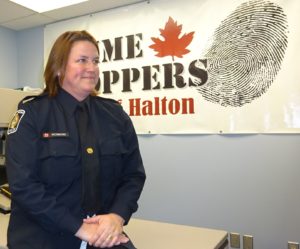 Burlington, being part of the Halton Region, is tied in with Milton, Oakville and Halton Hills and part of Halton Crime Stoppers. Burlington, being part of the Halton Region, is tied in with Milton, Oakville and Halton Hills and part of Halton Crime Stoppers.
The Regional police recently appointed a new liaison officer to work with Crime Stoppers on a daily basis. Det Constable Jodi Thomson takes on this role as the next step in her 15 years + police career.
A graduate of the police program at Mohawk Colle Thomson was part of the influx of many more women into police service.
Born in Burlington, a graduate of Lester B. Pearson high school, Thomson made Oakville her home where she served as a patrol police officer and then as a detective with the Criminal Investigation branch where she focused on Break and Enter.
Thomson will tell you that the most satisfying part of her career to this point is the four years she spent in Educational Services where she worked with high school throughout the Region.
Thomson also served as an Acting Sergeant working on personal assault cases.
This latest assignment has Thomson working on one of the most critical links in the flow of information from the public to the police.
Everyone has heard about Crime Stoppers said Thomson, few understand how critical a part of policing it really is.

 By Pepper Parr By Pepper Parr
March 3, 2017
BURLINGTON, ON
Here we go again.
It is hard to believe how obtuse some of the people at City Hall can be.
A seven paragraph media release with the word pilot project slipped in but not one use of the work bike or the words road diet.
Here is what the city sent out.
“Water main work with Halton Region will begin on New Street between Dynes Road and Cumberland Avenue on March 7, resulting in lane closures and scheduled water service shutdowns. The construction is scheduled to be completed in May.
“The installation of a new water main between Guelph Line and Dynes Road began in October and November 2016. The work to install the rest of the water main between Dynes Road and Cumberland Avenue will start earlier than scheduled due to mild weather.
“Residents and businesses will be given 48 hours’ notice for scheduled water service shutdowns. Water main installation will include the replacement of curbs, gutters and the boulevard to restore any damage from the water main works.
“New Street between Walkers Line and Guelph Line is the site of a pilot project that began in August 2016 for all street users.
“Completing the water main installation in May will reduce the disruption to New Street into two shorter, two-month intervals rather than one six-month construction period originally planned for the spring and summer of 2017. This will allow for longer, uninterrupted traffic data collection.
“The city is collecting data, and will continue to collect data after the water main work is done and until the end of the summer to ensure the city has the data needed to assess the pilot. That information, along with travel times on nearby residential roads that run parallel to New Street, will be included in a recommendation report to Burlington City Council this fall.
“Creating more travel options for the community means thinking differently about how our city road network looks and functions. The one-year pilot on New Street is an example of how some existing roads in Burlington could be redesigned to give people more travel options to get around the city.”
One of the most contentious projects the city has decided to do – lessen the amount of road space for vehicular traffic on New Street and put in bicycle lanes. It was set up as a pilot project and public opinion views were all over the map.
It was so contentious that the Mayor couldn’t get some personal private time at the Y – residents kept approaching him to bend his ear.
In future they should take him by the ear out to the woodshed.
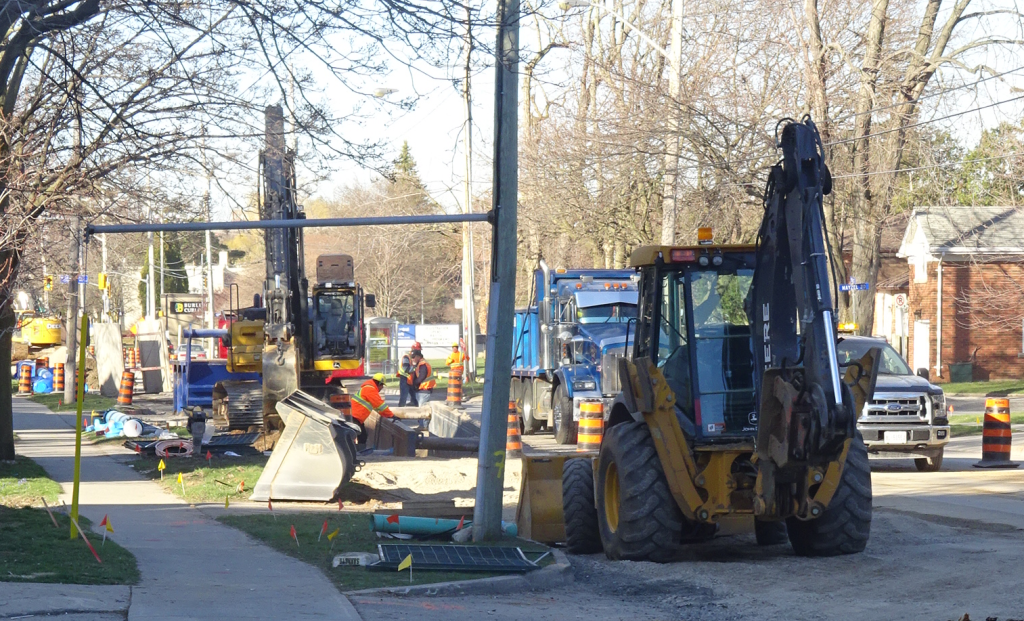 New water mains being laid down on New Street west of Guelph Line. One of the reasons for doing the pilot project on dedicated bicycle lanes was because New Street was going to have significant water main work done and then a new layer of asphalt laid down – it was thought that would be a convenient time to install bicycle lanes and see how they worked.
To not even use the words “road diet” or bike or bicycle is sneaky and only adds to the cynicism over the way city hall works. Do they think that by not using the words that people will forget?
Transparent – accountable – please!
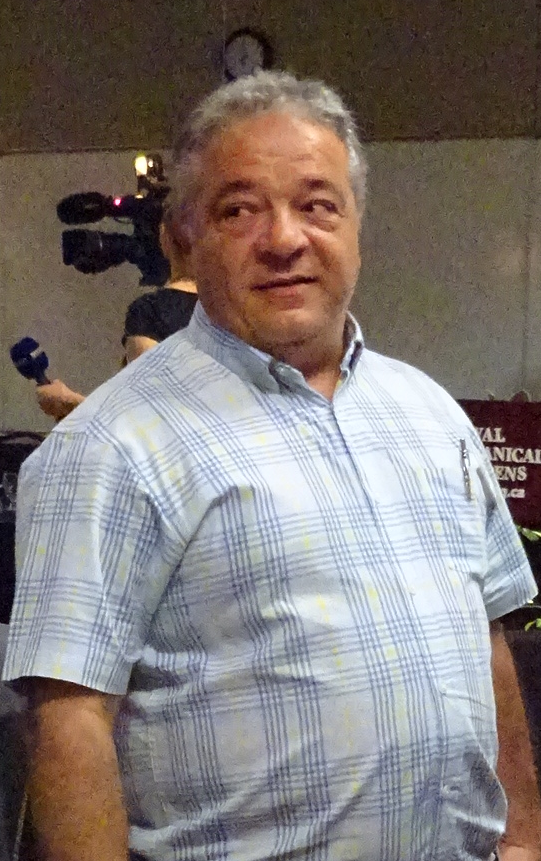 Vito Tolone, Director of Transportation They transportation department should be ashamed of themselves for letting this kind of media release get sent out. The close to 3000 people at have signed a petition have every reason to be angry – city hall has been exceedingly disrespectful
Vito Tolone, Director of Transportation is quoted as saying” “A lengthy and uninterrupted time-frame to collect all the data needed for the New Street pilot will be beneficial to staff when incorporating this information into our report to City Council.” He can’t say the words either.

 By Pepper Parr By Pepper Parr
March 3, 2017
BURLINGTON, ON
This article has been corrected. We initially said there was a 25% reduction being put in place which was on top of the 8% deduction on the HST tax that applies to Ontario power bills. That was incorrect. The 25% includes the 8% HST reduction. Our apologies.
The push is on.
The provincial government has every member of the Legislature out in the field tell you about that 25% reduction in your hydro prices – that on top of the HST they stopped collecting from you on the provincial part of that tax,
A number of political pundits think this drive is being done to save a failing government that has to head to the election polls next year. Maybe.
The message from the government is that Ontario is lowering electricity bills by 25 per cent on average for all residential customers as part of a significant system restructuring that will address long-standing policy challenges and ensure greater fairness.
 You will see this advertisement often and you will be told the the story even more often. Will the public buy it? Depends on what the public has in the way of an alternative government. Starting this summer, Ontario’s Fair Hydro Plan would provide households with this 25 per cent break. Many small businesses and farms would also benefit from the initiative. People with low incomes and those living in eligible rural communities would receive even greater reductions to their electricity bills. As part of this plan, rate increases over the next four years would be held to the rate of inflation for everyone.
These measures include the eight per cent rebate introduced in January and build on previously announced initiatives to deliver broad-based rate relief on all electricity bills.
Taken together, these changes will deliver the single-largest reduction to electricity rates in Ontario’s history.
Electricity rates have risen for two key reasons:
• Decades of under-investment in the electricity system by governments of all stripes resulted in the need to invest more than $50 billion in generation, transmission and distribution assets to ensure the system is clean and reliable
• The decision to eliminate Ontario’s use of coal and produce clean, renewable power, as well as policies put in place to provide targeted support to rural and low-income customers, have created additional costs.
The burden of financing these system improvements and funding key programs has unfairly fallen almost entirely on the shoulders of today’s ratepayers. To relieve that burden and share costs more fairly, two system fixes are being undertaken.
Recognizing that the electricity infrastructure that has been built will last for many decades to come, the province would refinance those capital investments to ensure that system costs are more equitably distributed over time. In addition, a number of important programs, such as the Ontario Electricity Support Program (OESP), will now be funded by the government instead of by ratepayers.
The province will also launch a new Affordability Fund, enhance the existing OESP and Rural or Remote Rate Protection (RRRP) program and provide on-reserve First Nations households with a delivery credit. These new measures will cost the government up to $2.5 billion over the next three years.
Notwithstanding that hydro rate relief costs will add significant pressure on the fiscal framework, the province continues to project a balanced budget for 2017-18, and will provide a full update on its fiscal plan in the spring budget. Maybe.

 By Staff By Staff
March 3rd, 2017
BURLINGTON, ON
It was to be built with federal money and there was a deadline – March 15th of this year – so there wasn’t much time for photo ops for the political class.
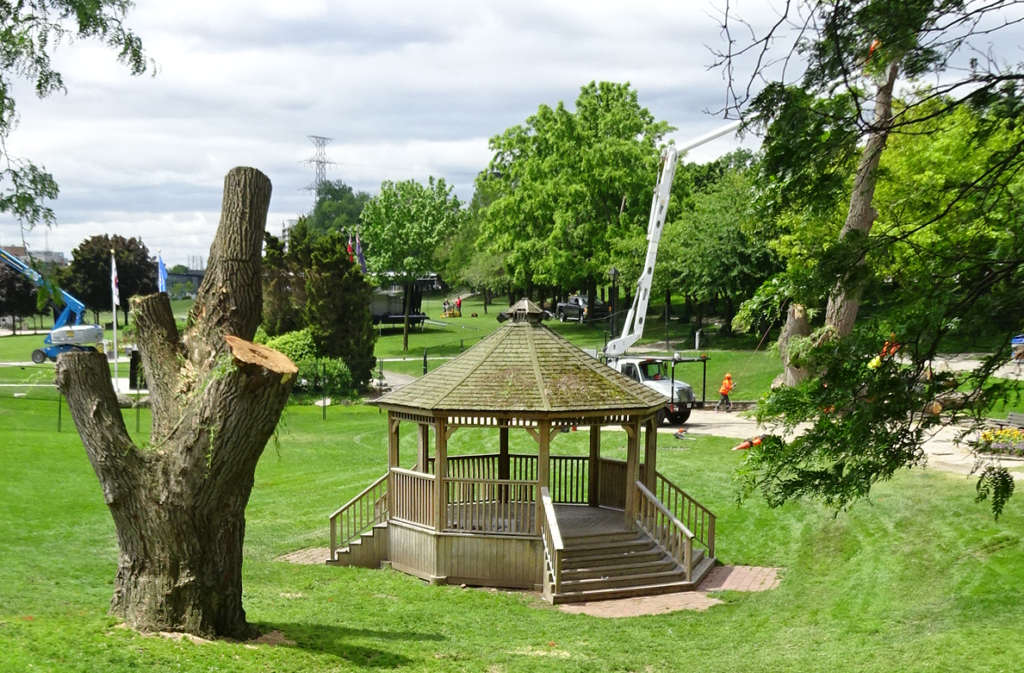 The old Gazebo had some character – this view shows the stump of the magnificent willow that was cut down. Down came the old structure – at a time when the public wouldn’t see it happening. Down came those two magnificent willow trees that were nowhere near the level of rot that the arbourists said they were – which was the reason they were taken down – public safety.
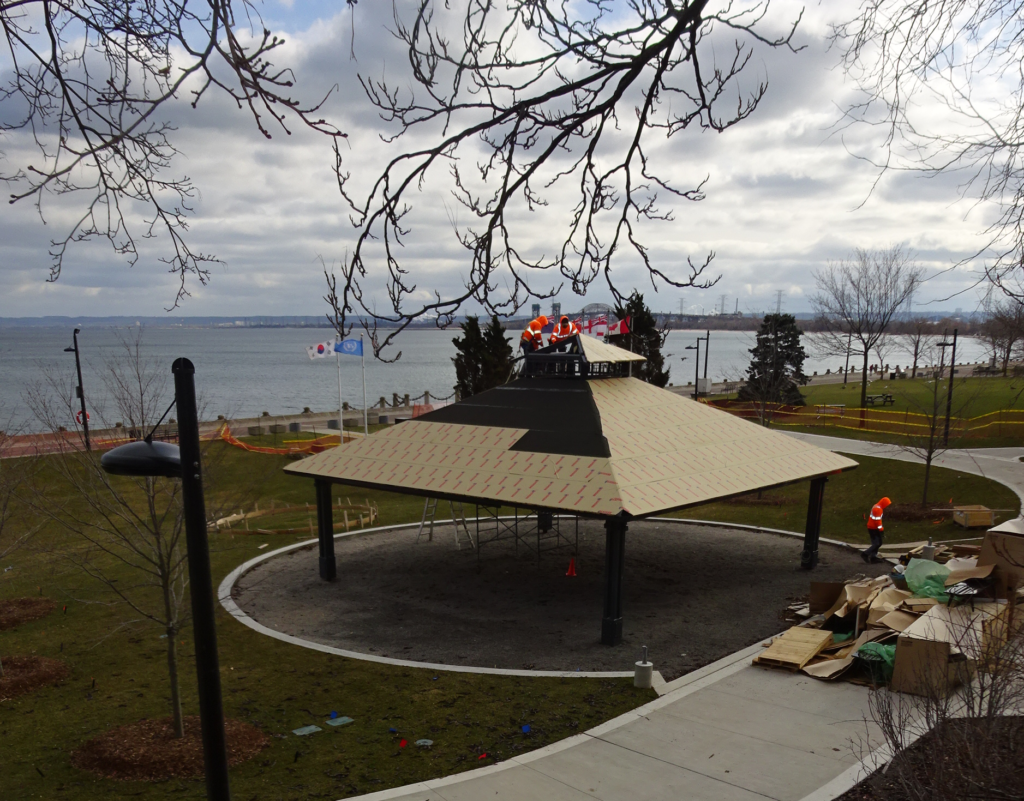 The new Gazebo – looks a bit like the kind of place Mennonites would tie up their horses to keep them out of the sunshine. Not a lot of character to this pretty bland looking feature to one of the best waterfront parks in this country. The new gazebo doesn’t appear to have all that much character – but let’s give them time to finish the job. It had to be made fully accessible.
The waterfront we have today is the result of the hard work and consistent effort by Spencer Smith who was a merchant with a shop on Brant Street yards away from the edge of the lake.
The two will trees were planted by Smith.
Parts of the willow trees were saved and will be cut into planks that will be used to build objects – perhaps a desk that will be used by future Mayors?
There were 200 seedlings taken as well. They are being nursed and will be given away at some point in the future. THAT will be the photo op for the political class.
Who was Spencer Smith
The evolution of the new Gazebo

 By Ray Rivers By Ray Rivers
March 3, 2017
BURLINGTON, ON
My grandfather used to keep his money under his mattress, which might have made it lumpy and stiff, had he ever accumulated anything resembling a sizeable stash. And what little he didn’t stuff there, he’d re-invest in commodities, mostly vodka. That was a while ago, before the government introduced retirement saving instruments like RRSPs (registered retirement saving plans), which allow tax deferrals, and TFSAs (tax-free saving accounts), which make the interest or capital gains tax-free.
 Hiding your money under a mattress – and it doesn’t have to always be Canadian dollars. An economy needs savings, because that is a disposable pool of capital ripe for investment and growth. The Canada Pension Plan was in part created just for that purpose, a fund for governments to dip into to develop highways and other infrastructure back in the day. And no government claims to be more committed to building more infrastructure, and needs those funds more, than our modern day federal government.
But we are just a day or two beyond the deadline for investing in an RRSP – so the question is why are total RRSP contributions falling and why is there so much unused potential in the TFSAs? It could be blamed on low interest rates which dissuade the lazy investor. After all actively managing your registered investments in the rising share-market demands more time and work, more risk and more cost than a lot of people are willing to expend.
And the promise of a more robust CPP (Canada Pension Plan), thanks to our Ontario premier, may have convinced people that they’ll need less personal savings outside of the CPP. But most likely It has to do with the financial squeeze facing middle-income earners, caught between the pressures of keeping abreast in our consumer society and making ends meet in an ever deteriorating workplace economy. Not much is left over for savings.
 The baby boomers changed the world every decade as they went from cribs to caskets. And perhaps the lure of a tax deferred income savings plan has lost its lustre. Today’s young workforce has to be discouraged listening to their parents’ grumbling over paying more taxes now on RRSP withdrawals than they ever gained in tax relief back when. And maybe RRSPs are not the panacea they were sold to be – to these human guinea pigs, the baby boomers.
Since the CPP gets lumped in with all the other deductions on a pay slip, it also tends to be called a payroll tax. After all, your CPP donation goes off to an agency which holds it until you reach a magic retirement age, or die. In some ways that is like sending one’s income taxes to Ottawa and hoping they’ll come back as old age security payments (OAS) when you retire. So are RRSPs and TFSA’s nothing more than voluntary taxes, since they’re also locked-in under some kind of government plan?
There is a lot of talk about taxes from the candidates vying to be the next leader of the Conservative Party these days. Everyone of them is promising to cut income taxes, and Mr. Chong is claiming the biggest income tax cut of all. But then this pinkish Tory explains he’s doing that because he’s planning to keep Mr. Trudeau’s carbon tax, and making it revenue neutral – reminiscent of robbing Peter to pay Paul. Except Paul already has lots of cash, thank you, and Peter is the guy filling his car’s gas tank.
 Former Prime Minister Brian Mulroney leads the chorus in singing an Irish song on stage with his wife (Mila) and U.S. President Ronald Reagan and First Lady Nancy Reagan at the conclusion of a gala performance in Quebec City March 17, 1985. Listening to the debates one can’t help but get a warm nostalgic feeling – like back in the days when old Irish-eyed singers Ronnie and Brian first introduced their versions of trickle-down economics between their verses. They reasoned that by giving more money to the rich, the poor would prosper because, as Newton said, everything that goes up eventually trickles down.
The conservative think-tanks and their disciples love, and have never given up on, this zany bit of oxymoronic nonsense. So, not to attract disfavour from their spiritual core sources, the Conservative Tory leadership wannabes are goose-stepping to the beat of our southern neighbour, the Donald, who is promising his billionaire buddies even more.
They say It’s about putting more money in peoples’ pockets. Though why the top 10% of income earning Canadians need that much more cash, or what they would do with it, is a good question. I guess they’ll just let it trickle down to those most in need, like we’ve seen them do in the good old days, right?
Thanks to an economic theory called the ‘marginal propensity to consume’, we know that economic growth comes from putting money into the hands of the lower income masses, not the wealthy. Perhaps some of these candidates are hoping to extend Mr. Trudeau’s modest tax cuts, by shifting tax brackets in favour of the middle class, as he did. Though the not-a-snow-ball’s-chance-in-hell Mr. Chong seems intent on playing the role of a reverse Robin Hood.
 It is the tax deductions from the pay cheques of the working Janes and Joes that keeps the government alive. As Mr. Trudeau found out there is a lot of income tax revenue coming in from the common person, the working Joe/Jane, and shifting tax brackets to favour the middle class is costly to the public purse. So it’ll be easier for your next Tory government to follow the model set by Mr. Trump, which inadvertently stretches the wealth gap even more. And that would add very little real loonie change into the pockets of those in the middle, making it just as hard for them to save for that next RRSP or TFSA.
So, so much for that new 4K TV, a vacation or new car. And so much for securing those golden years with sound financial retirement planning. Who can blame them for not sticking more money into RRSPs and TFSAs.
Despite all the talk of helping the middle class there is not going to be enough left over, unless you just want to pad your bedding as my grandpa did. And if that interrupts your sleep too much, you could always use a little of that modest stash to get a good bottle of vodka.
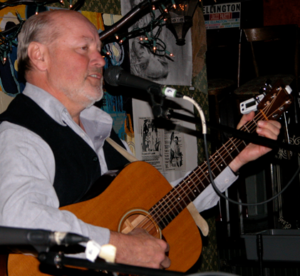 Ray Rivers writes weekly on both federal and provincial politics, applying his more than 25 years as a federal bureaucrat to his thinking. Rivers was a candidate for provincial office in Burlington in 1995. He was the founder of the Burlington citizen committee on sustainability at a time when climate warming was a hotly debated subject. Tweet @rayzrivers Ray Rivers writes weekly on both federal and provincial politics, applying his more than 25 years as a federal bureaucrat to his thinking. Rivers was a candidate for provincial office in Burlington in 1995. He was the founder of the Burlington citizen committee on sustainability at a time when climate warming was a hotly debated subject. Tweet @rayzrivers
Background links:
Pensions – Taxes – More Taxes –
Interest Rates – Marginal Propensity to Consume – Chong –

 By Pepper Parr By Pepper Parr
March 2, 2017
BURLINGTON, ON
The Board of Education felt it was important that they collect the views of as many parents as possible on the possible closing of high schools in Burlington.
They did a survey of people who attended a public meeting in December using hand held devices for people to respond to questions put up on a large screen.
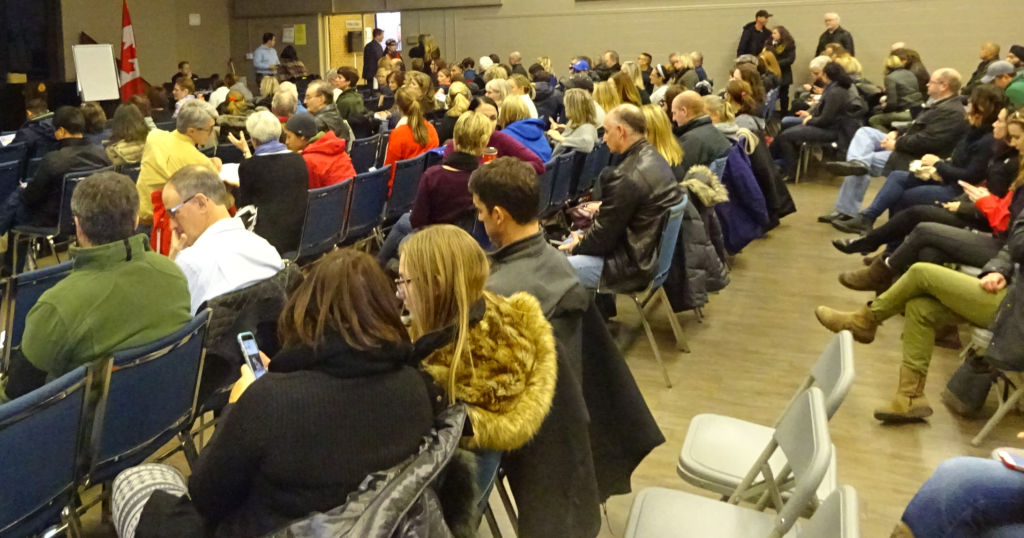 Parents at a December meeting were asked to give their views on a number of questions – the results were heavily skewed. That one didn’t go all that well for a couple of reasons. The audience was heavily skewed towards parents from Central high school. People from that school showed up. Most people thought the questions were poorly thought through. The people who put the survey together did admit that it wasn’t their finest hour.
The details of that survey can be found at LINK
The Board decided that they really needed input and feedback and set up a second survey that is being done on line and is taking place now.
To complete the current Board of Education on-line survey CLICK here.
 Students doing the on-line survey at the public meeting earlier this week. The original intention of this on-line survey was to set it up so that every household with high school students in Burlington would get a dedicated link to the survey. This would have given the response some validity.
Turns out that somewhere between firm doing the survey and the technical people at the board there was a failure to communicate or someone didn’t know what they were doing.
The survey is on an open link – which means anyone can respond and do so as often as they wish.
 Given the level of feelings on the issue of closing a high school in Burlington you can just see families sitting at their keyboards and responding to the survey for as long as they can stay awake. Given the level of feelings on the issue of closing a high school in Burlington you can just see families sitting at their keyboards and responding to the survey for as long as they can stay awake.
We received a graphic that will add a little humour to a situation that isn’t funny anymore.

 By Staff By Staff
March 2, 2017
BURLINGTON, ON
One of the strengths of the Art Gallery of Burlington are the Guilds – they are the bedrock on which the place was built.
There are Guilds for a number of disciplines including, Fibre Arts, Handweavers and Spinners, Hooking Craft, Latow, Photography, Potters, Sculptors and Woodcarvers,
 Crafts are for anyone and everyone. Burlington’s MPP Eleanor McMahon tries her hand at a loom during an AGB event. MP Karina Gould is on the right with AGB president Robert Steven on the left. The Arts Burlington Annual General Meeting is taking place on March 9, 2017 at 7 pm. in the Rotary Room at the Art Gallery of Burlington.
The evening will feature Robert Steven, President and CEO of the Art Gallery of Burlington, as well as annual reports by our guild presidents: Fine Arts, Latow Photographers, Handweavers and Spinners, Fibre Arts, Sculptors and Woodcarvers, Hooking Craft, and Potters
A keynote speech by Ms. Sandy Simmelink, “Art, Time and Tools.”
Light refreshments provided.

 By Staff By Staff
March 2, 2017
BURLINGTON, ON
There are a lot of unhappy people who are commenting on how poorly they feel the Halton District School Board is handling the flow of information on the recommendation that was given to the Program Accommodation Review Committee (PARC) to close Central and Pearson high schools.
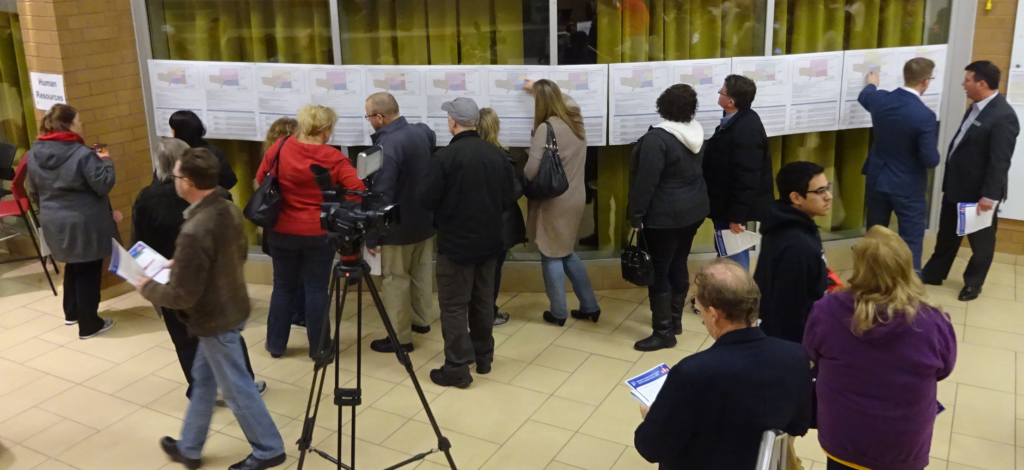 Parents scan details and specifics on each of the six school closing options that the PARC is currently considering for the report they will give the Director of Education. The PARC is made up of two parents from each of the seven high schools. Their job is to give the Director of Education a recommendation. The Director of Education does not have to accept or adhere to the recommendation.
The Director then writes his report to the trustees and those trustees make the final decision.
The first public meeting to look at specifics and details was held earlier this week with a very large turnout.
The second public meeting is to take place next Tuesday, March 7th at the New Street Educational centre.
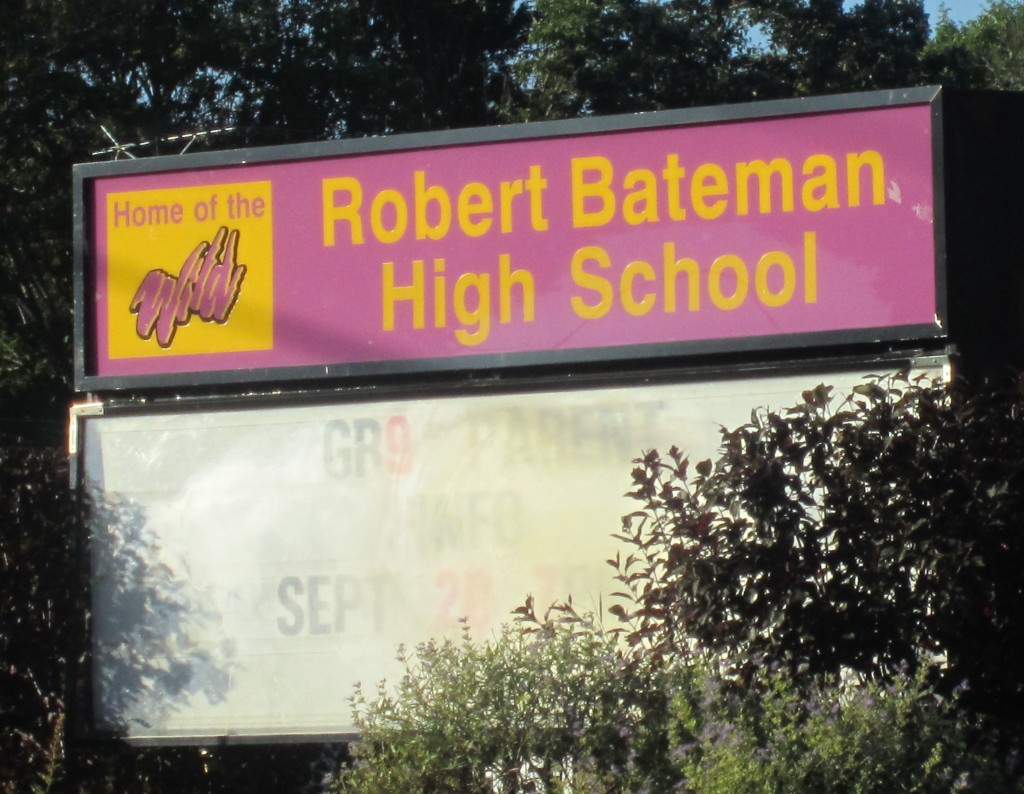 Robert Bateman high school is going to get a group hug on Saturday. This Saturday the parents at Bateman high school are going to gather and collectively give their school a “hug”.
Bateman is a pretty big school – it is going to take a large crowd of people to circle that building on Saturday.
The group hug takes place at 1:00 pm.
One Gazette reader wrote in and said “your story about the Mayor’s response show how heated it’s gotten and also how poorly the board is handling it all.”
The PARC has now whittled down the 30 options that it was given to six. Under these different options Central, Pearson, Bateman and Nelson could be closed.
There is an option that says – don’t close any of the schools – but change the school boundaries so that the existing high school population is spread more evenly between the high schools.
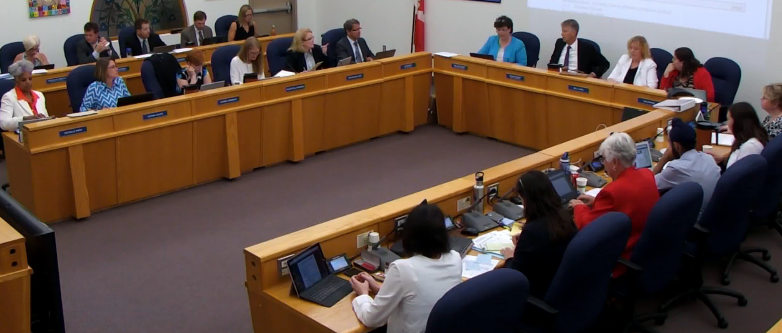 Halton District School Board trustees – there are 11 of them; four representing Burlington – all the trustees will vote on school closings Whatever the school board trustees decide, and it is those trustees that are going to make the final decision on May 17th, the concerns should be addressed to the final decision makers – these are the people you elected to oversee the operation of the school in the Halton Region.
There are 11 trustees, four from Burlington that will decide what the board should do.
When the process of determining how to manage the problem of 1800+ empty classroom seats in the high school was put before the public there was very little public interest.
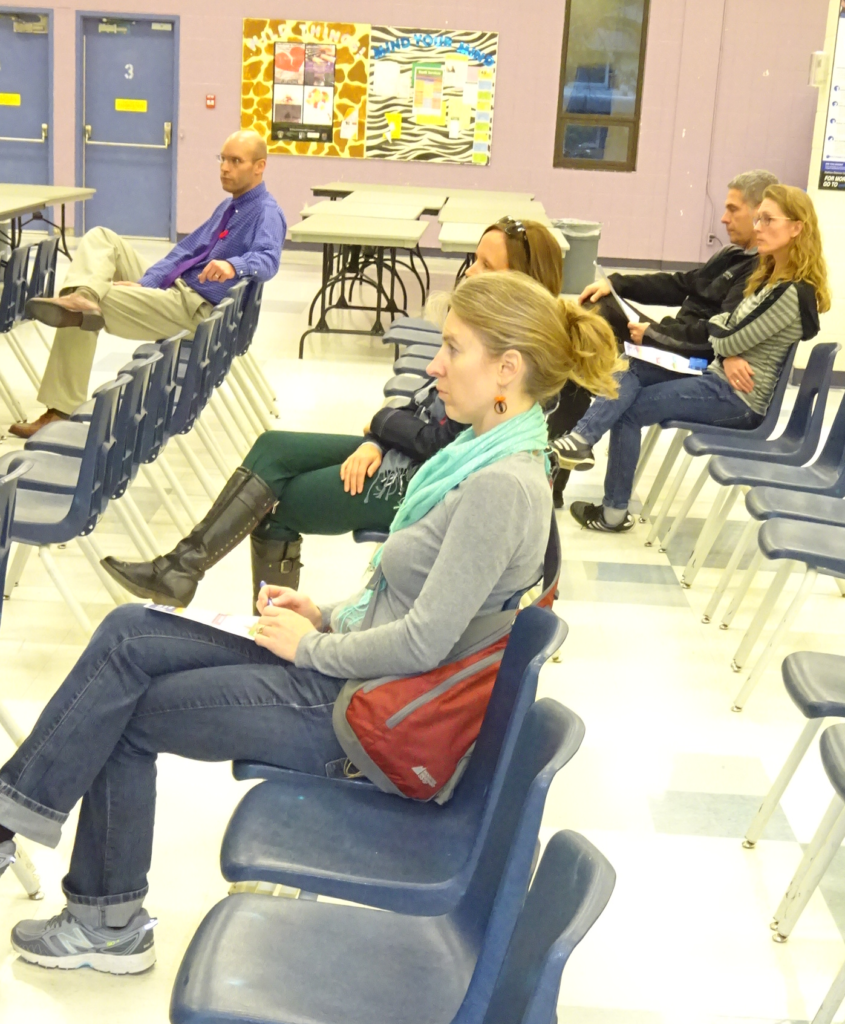 There were less than ten people at the first “information session” given by the school board staff at Bateman high school. One of them was the school principal. At the first information meeting, there was one held at every high school, there were just five people at the event held at Bateman.
The school board had large banners nailed to the front of six of the high schools to alert parents to the situation.
The focus is currently on the work the PARC is doing. That will shift to the report the Director of Education, Stuart Miller has to write and present to the trustees on March 29th.
The critical dates are set out below.
Public Meeting #2 (South Burlington schools)
March 7, 2017 at 7:00 pm
New date New Street Education Centre
3250 New Street
PARC Working Meeting #5
March 23, 2017 at 7:00 pm J.W. Singleton Education Centre
2050 Guelph Line
Director’s Report (with compiled feedback) to Committee of the Whole March 29, 2017 at 7:00 pm J.W. Singleton Education Centre
2050 Guelph Line
Public Delegation Night
April 18, 2017 at 6:00 pm J.W. Singleton Education Centre
2050 Guelph Line
Final Report to Board of Trustees for decision May 17, 2017 at 7:00 pm J.W. Singleton Education Centre
2050 Guelph Line
 Protesters have stood outside the Board of Education offices on Guelph Line any time there is a PARC meeting. 
 By Pepper Parr By Pepper Parr
March 1, 2017
BURLINGTON, ON
As a city we are going to do ourselves in unless we do better than we are doing.
With the Halton District School Board going through the difficult process of deciding which, if any, high schools to close, the mayor has declared that he “represent the interests of all the people of Burlington. As such, I will not choose to promote one school over another during this review process.”
In a statement published on his blog yesterday, the Mayor said:
“In a perfect world with unlimited financial resources, we would not have to see any schools closed in Burlington.
“Every school in Burlington matters to its neighbourhood, its students and their families, its staff and its alumni.”
“As Mayor, I represent the interests of all the people of Burlington. As such, I will not choose to promote one school over another during this review process. This is a decision of the Halton District School Board, and because of that, it is important that Burlington City Council not use its influence to favour specific schools.
Burlington City Council purposely chose City Manager James Ridge to serve as an objective representative of the City of Burlington on the Halton District School Board’s Program and Accommodation Review Committee.”
That is not how Mr. Ridge got chosen to represent the city on the Program Accommodation Review Committee (PARC). At a city council meeting the Mayor read out an email he had received from a resident asking that he, the Mayor, sit on the PARC.
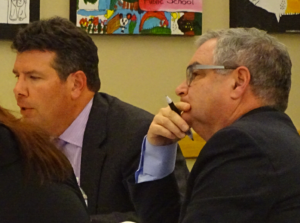 Burlington city manager, on the right with Scott Podrebarac on the left at a PARC meeting. The Mayor said at that meeting that Mr. Ridge had volunteered to sit on the PARC. There was no debate or discussion. The Mayor just made the statement and that was it.
One resident wrote the Gazette and said of the Mayor: “What he doesn’t understand is most residents get that he can’t favour one school over another. But they also don’t expect him to stay on the sidelines. They expect him to speak up on the importance of community schools, and how the city’s strategic plan calls for walkable, complete communities.
“They expect him to represent the public’s interest and encourage the school board to elevate their perspective beyond operating cost reductions.
“The school board has created a process that is pitting one neighbourhood against another. It’s disappointing but not surprising the mayor has declared what he is NOT prepared to do. What resident’s want to do know, is what he WILL do.
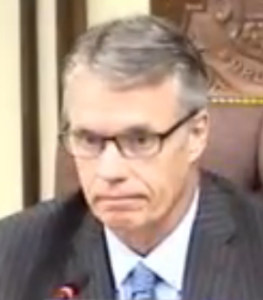 Mayor Rick Goldring at a city council meeting. “If he understood his role and had the fortitude, he would not duck responsibility; rather he would use his office to assist the effort to find the best possible outcome for Burlington, and serve in whatever way he can to bring neighbourhoods together.
“He chose the easy way out.”

 By Staff By Staff
March 1, 2017
BURLINGTON, ON
The Halton Regional Police Service (HRPS), is one of 80 law enforcement agencies and public and private sector organizations nationwide, hat will be involved in Fraud Prevention Month 2017. The hashtag is #FPM2017.
Each year, thousands of Canadians of all ages and backgrounds become victims of fraud. Fraud victims not only suffer direct financial loss but may endure the stressful process of reversing its damaging effects such as identity theft and negative credit/credit history.
The Gazette reports on some very sad situations where a senior has lost tens of thousands of dollars in some cases to people who have preyed on them

Halton Regional Police Staff Sergeant Chris Lawson of the Regional Fraud Unit points out that” “The reality is fraud is a moving target – no sooner does word spread about one scam then it’s on to another. While the specifics surrounding a scam may differ, they are all rooted in deceit. The key is to know what to look for.”
Now in its 13th year, the aim of Fraud Prevention Month is to educate Canadians about fraud and on how best to protect themselves from it through the 3Rs: Recognition, Rejection, and Reporting. The central theme for 2017 is ‘Don’t buy into fraud.’
To accomplish this, agencies including the HRPS will carry out a number of activities and initiatives specific to their jurisdiction. In Halton, these will include:
• Weekly ‘Fraud of the Week’ press releases detailing current/popular schemes
• Increased promotion of fraud-related arrests to members of the press and through social media (Twitter (@HaltonPolice and District accounts) and Facebook)
• Live Fraud Q&A on Twitter (@HaltonPolice) on Friday, March 17 from 11:00 a.m. – noon
• Fraud information sessions for seniors offered at retirement homes throughout Halton
More information about fraud, including a number of useful links and resources, is available at www.haltonpolice.ca/about/specializedunits/fraud.php or by following the hash tag #FPM2017 on Twitter through @HaltonPolice.

 By Staff By Staff
March 1, 2017
BURLINGTON, ON
The Lights are out at Ireland Park
Due to an electrical safety issue, all lights are out in Ireland Park.
Park users are advised that lights in the park are not functioning and this outage affects all areas of the park until further notice.

|
|







































































